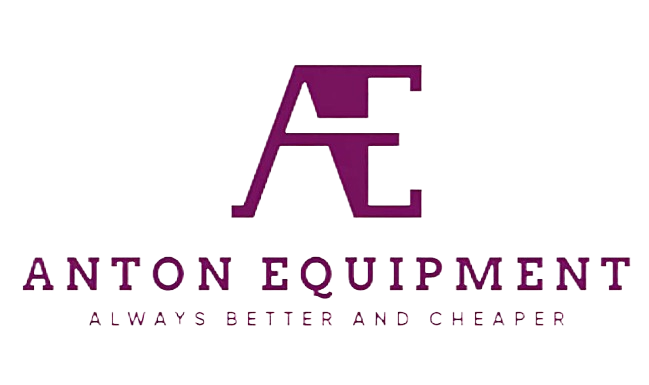News
Maintenance Tips for Prolonging the Lifespan of Skid Steer Loader Attachments
Essential Daily Maintenance Routines for Skid Steer Attachments
Pre-Operation Visual Inspections
Performing pre-operation visual inspections is critical to maintaining skid steer attachments. Begin with a thorough walk-around to identify any visible damage or wear. This includes checking hydraulic lines for fraying or leaks, as these issues can lead to significant operational problems if ignored. Additionally, confirm that all safety guards and shields are properly in place to ensure operator safety. Pay close attention to pins and connectors, ensuring they are secure to prevent attachment failures during operation. These inspections help prolong the life of your attachments and ensure safe, efficient use.
Cleaning Debris After Use
Cleaning debris from skid steer attachments after each use is essential to maintain functionality and prevent rust. Begin by removing all visible mud and clumps to ensure the attachment performs optimally. A pressure washer can reach hard-to-access areas, and using ecological cleaning solutions is recommended to avoid environmental harm. Regular inspection for dirt accumulation in crevices is necessary as this can cause long-term damage if overlooked. Establishing a consistent cleaning routine is vital for maintaining the performance and longevity of mini excavator attachments and enhancing overall skid steer maintenance.
Lubricating Pivot Points and Joints
Lubricating pivot points and joints in skid steer attachments is crucial for smooth operation and longevity. Identify all critical areas needing lubrication as per the manual, and apply high-quality grease according to manufacturer specifications. This practice not only ensures smooth functioning but also helps avoid premature wear of the attachments. By creating and adhering to a regular lubrication schedule, you can significantly extend the lifespan of these components and ensure reliable performance. Regular lubrication is an integral element of skid steer maintenance that can prevent costly repairs in the future.
Fluid Management and Hydraulic System Care
Checking Hydraulic Fluid Levels
Regularly inspecting hydraulic fluid levels is critical to ensuring skid steer attachments' efficient and reliable operation. Adequate fluid levels contribute to maintaining optimal pressure and overall system performance. Operators should monitor the condition of the hydraulic oil, as contaminated or dirty fluid can lead to accelerated wear and damage. By documenting fluid levels and analyzing trends over time, operators can identify potential issues early and implement proactive maintenance strategies.
Monitoring for Leaks in Hoses
Preventing hydraulic leaks is pivotal in maintaining the integrity and safety of your skid steer attachments. Conducting routine inspections of hoses and connections can help identify signs of leaks or wear before they escalate into significant problems. Recognizing the indicators of hydraulic leaks, such as unexplained loss of fluid or visible drips, allows for prompt remedial actions, including repairing or replacing compromised hoses. This regular maintenance practice ensures the equipment's longevity and operational safety.
Using Manufacturer-Approved Lubricants
Adhering to manufacturer recommendations for lubricants is vital for maximizing the performance and lifespan of skid steer attachments. Each attachment may have unique lubrication needs specified in the operator's manual, emphasizing the importance of using the correct products. Utilizing manufacturer-approved lubricants not only enhances equipment performance but also supports warranty claims. This precision in lubrication methods contributes significantly to upholding the functionality and efficiency of the equipment.
Attachment-Specific Maintenance Strategies
Inspecting Teeth on Buckets and Grapples
A crucial aspect of maintaining skid steer attachments like buckets and grapples is regularly inspecting the teeth for wear patterns. This is not just about spotting visible damage; uneven wear can indicate an imbalanced load distribution, which may lead to more significant issues if left unchecked. Proactive replacement of worn teeth can improve operational efficiency and reduce stress on the machinery, ultimately extending its lifespan. Using high-quality replacement parts is essential to ensure compatibility and durability, which prevents further complications.
Winter Care for Snow Pushers and Blowers
Winter presents unique challenges for skid steer attachments, particularly snow pushers and blowers. Applying anti-freeze solutions or protective coatings can prevent the freezing of crucial parts, thereby maintaining functionality. It’s also vital to inspect and replace any worn-out parts in advance of extreme winter conditions to avoid breakdowns. After use, cleaning these attachments is crucial to prevent the accumulation of salt and other corrosive elements, thereby reducing the risk of damage and extending the lifespan of the equipment.
Proper Storage to Prevent Corrosion
Storing attachments correctly is just as essential as maintaining them during use. To minimize the risk of moisture exposure, which can lead to corrosion, attachments should be stored in a dry location away from direct sunlight. Covering attachments with tarps or using enclosures provides added protection against environmental elements. Additionally, applying rust protection sprays to metal surfaces before storage can further safeguard against corrosion, ensuring your attachments remain in optimal condition for future use.
Tire and Track Preservation Techniques
Maintaining Optimal Tire Pressure
Proper tire maintenance is crucial for the performance and fuel efficiency of skid steers. Regularly checking the tire pressure can help detect issues early, as improper levels can lead to reduced efficiency and safety hazards. Skid steer operators should use a quality tire pressure gauge to ensure accuracy, as under-inflated tires wear out more quickly and can cause stability problems. Moreover, temperature fluctuations can impact tire pressure, so adjustments may be necessary to maintain optimal performance. Consistent checks not only protect the tires but also enhance overall operational efficiency, a key aspect of skid steer maintenance.
Checking Track Tension Regularly
Ensuring the correct track tension is essential for the optimum functioning of skid steers and other tracked machinery. Regular checks allow operators to adjust tension according to the manufacturer's specifications, which helps prevent premature wear and tear. Keeping a detailed record of tension adjustments can provide insights into emerging patterns that may indicate underlying issues. Proper track maintenance extends the lifespan of the equipment, supports operational efficiency, and reduces downtime associated with unexpected breakdowns.
Avoiding Abrasive Surfaces
Minimizing contact with abrasive surfaces significantly prolongs the lifespan of both tires and tracks. Planning job sites strategically can prevent unnecessary wear by avoiding rough terrain wherever possible. In scenarios where challenging terrains are unavoidable, using skid steer attachments designed for heavy-duty use can mitigate wear. By prioritizing terrain management, operators not only preserve their machinery but also optimize productivity by decreasing the frequency of necessary repairs.
Scheduled Servicing and Manufacturer Guidelines
Following 50-Hour Service Intervals
Adhering to a 50-hour service interval is crucial for minimizing wear and extending the life of skid steer equipment. This involves conducting regular visual inspections and tracking service intervals to catch issues early before they become larger problems. By maintaining a detailed maintenance log, operators can identify service patterns over time, ensuring consistent equipment care and operational efficiency. Scheduling service sessions not only bolsters machine longevity but also supports optimal performance through preventive maintenance practices.
Replacing Worn Components Promptly
Identifying and promptly replacing worn components is vital to avoid larger, costly issues in skid steer maintenance. Operators should create a checklist of essential parts that require periodic assessment, such as tires, tracks, hydraulic connectors, and skid steer attachments. Utilizing manufacturer-approved parts for replacements ensures compatibility and maximizes the reliability of the machinery. By consistently monitoring and updating these components, operators uphold effective maintenance strategies and avert unexpected downtimes, keeping the equipment in top working condition.
When to Seek Professional Maintenance
Knowing when to consult professional maintenance services is essential when skid steer repairs surpass basic servicing requirements. If an issue is beyond the routine care, professional services can prevent the problem from escalating. It's important to understand the range of professional repair services available locally, especially for emergency situations, and establish a relationship with these experts before equipment breakdowns occur. This proactive approach ensures quick action is taken when needed, safeguarding the machinery's operational state and extending its lifespan.












































